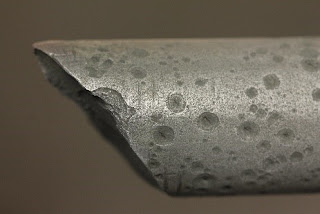How to Increase Production and Decrease Costs with Artificial Lifts
Artificial lifts, systems and operations are designed to save
money. They do this by increasing production and decreasing costs. However,
there’s a science to ensuring your system achieves the proper results. This
includes taking several factors into account, including how to maximise
production in a mature field. And artificial lifts are one of the best ways to
address production requirements. Below is an explanation of how this can be
accomplished.
Artificial Lift Systems and Types
Whether a lift system optimises production, depends on the type of
lift and system used. The lift chosen will depend on the field scale and on the
well’s parameters. On the other hand, the lift system or method chosen will
depend on production needs. Production needs are determined by assessing the
current field productivity, drilling, completions and reservoir. There are two
main lift systems: gas-assisted and pump-assisted. Additionally, there are
eight artificial lift
types. These types include:
·
Rod pump
·
Progressive cavity pump (PCP)
·
Gas lift
·
Hydraulic piston pump
·
Electrical submersible pump (ESP)
·
Linear lift system
·
Plunger lift
·
Pump-assisted plunger lift
The Function of Lift Systems
Lift systems have different designs, but they all perform the same
types of jobs, including: downhole or surface volumes, accurately predicting
production rates, choosing downhole equipment, accurately collecting well data
and predicting total dynamic head (TDH). A system that performs all these jobs
and more should deftly increase production while decreasing production costs. However,
once again, choosing the right lift and system will depend on several factors
or parameters. These parameters include:
·
The type of fluid produced
·
Bottom hole pressure
·
Total well depth
·
The onshore or offshore surface location
·
Wellbore geometry
·
Amount of fluid production
All the parameters must be known before a system is chosen.
Unknown parameters can make the selection process difficult or impossible. This
means some early, strategic planning before a lift system is even needed. When
choosing a system, you must also keep mind that pumps perform differently. For
example, plunger lifts are used in gas wells and use the well’s energy to pump
small amounts of liquid. ESPs or centrifugal pumps are dynamic displacement
pumps displace unfixed amounts of fluid. Positive displacement pumps (PDPs),
like progressive cavity, hydraulic piston and carbon
rod pumps hold a fixed amount of fluid ina cavity until itmoves in a certain direction (usually towards the surface).
Keys to Optimising Production
Strategic design and early planning are the keys to increasing production and decreasing costs. A design based on the characteristics of a well and a lift system’s operations will ensure the best lift and system are selected. Improper selection can causeexcessive workovers leading to higher operational costs, decreased production caused by pump failure, tubing wear issues, and excessive pump maintenance. So, selecting and implementing the wrong lift design and system can cause the opposite of the desired effect. It can cause increased costs due to frequent pump maintenance and downtime for workovers and decreased production.
Comments
Post a Comment